Acupuncture Ameliorated Behavioral Abnormalities in the Autism Rat Model via Pathways for Hippocampal Serotonin
- PMID: 37096024
- PMCID: PMC10122481
- DOI: 10.2147/NDT.S398321
Acupuncture Ameliorated Behavioral Abnormalities in the Autism Rat Model via Pathways for Hippocampal Serotonin
Abstract
Purpose: Acupuncture can improve symptoms of autism spectrum disorder (ASD), but the potential mechanisms remain undefined. So, we aimed to explore the behavioral improvement of autism rat model after acupuncture and to describe the potential molecular mechanism underlying these changes.
Patients and methods: Wistar rats were intraperitoneally injected with VPA 12.5 days after conception, and their offspring were considered as good models of autism. Experimental rats were divided into three groups (wild-type (WT), n = 10; VPA, n = 10; and VPA_acupuncture, n = 10). VPA_acupuncture group rat received 4 weeks of acupuncture treatment (Shéntíng (GV24), and Bilateral Běnshén (GB13)) on the 23rd day after birth. All rats were subjected to behavioral tests, including social interaction, open field, and Morris water maze tests. Afterwards, hippocampal tissues (left side) were removed and subjected to RNA sequencing (RNA-seq) analysis; ELISA was also used to detect the associated serotonin levels in the hippocampus.
Results: Behavioral tests showed that acupuncture treatment improved spontaneous activity, aberrant social interaction, and alleviated impaired learning and memory in the VPA-induced rat model. Differentially expressed genes (DGEs) analysis showed 142 significantly differentially expressed genes between WT and VPA groups, and 282 between VPA and VPA_acupuncture rats. Htr2c and Htr1a, 5-HT receptor genes, were up-regulated in the VPA group compared with WT group. Additionally, Tph1, a rate-limiting enzyme gene of 5-HT synthesis, was up-regulated after acupuncture. These genes were confirmed to have the same trend of expression obtained by RT-qPCR and RNA seq. Furthermore, the concentration of serotonin in the hippocampus in the VPA group was significantly lower than the WT and VPA_acupuncture groups.
Conclusion: Acupuncture improved abnormal behavioral symptoms in the VPA-induced rat model. Further experiments showed that the improvement of the serotonin system may be one of the main regulatory mechanisms of acupuncture for treating ASD.
Keywords: RNA-sequencing; acupuncture; autism; behavioral abnormalities.
© 2023 Chen et al.
Conflict of interest statement
The authors report no conflicts of interest in this work.
Figures
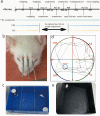

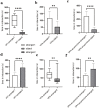
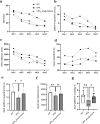

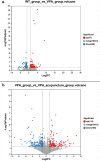







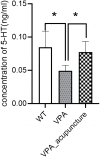
Similar articles
-
Chinese acupuncture: A potential treatment for autism rat model via improving synaptic function.Heliyon. 2024 Aug 29;10(17):e37130. doi: 10.1016/j.heliyon.2024.e37130. eCollection 2024 Sep 15. Heliyon. 2024. PMID: 39286195 Free PMC article.
-
The Changes of Amygdala Transcriptome in Autism Rat Model After Arginine Vasopressin Treatment.Front Neurosci. 2022 Mar 25;16:838942. doi: 10.3389/fnins.2022.838942. eCollection 2022. Front Neurosci. 2022. PMID: 35401102 Free PMC article.
-
Neuroprotective effect of the standardised extract of Bacopa monnieri (BacoMind) in valproic acid model of autism spectrum disorder in rats.J Ethnopharmacol. 2022 Jul 15;293:115199. doi: 10.1016/j.jep.2022.115199. Epub 2022 Mar 26. J Ethnopharmacol. 2022. PMID: 35346813
-
5-HT7 receptor activation rescues impaired synaptic plasticity in an autistic-like rat model induced by prenatal VPA exposure.Neurobiol Learn Mem. 2021 Sep;183:107462. doi: 10.1016/j.nlm.2021.107462. Epub 2021 May 18. Neurobiol Learn Mem. 2021. PMID: 34015444
-
Prenatal valproate in rodents as a tool to understand the neural underpinnings of social dysfunctions in autism spectrum disorder.Neuropharmacology. 2019 Nov 15;159:107477. doi: 10.1016/j.neuropharm.2018.12.024. Epub 2019 Jan 9. Neuropharmacology. 2019. PMID: 30639388 Review.
Cited by
-
Acupuncture may play a key role in anti-depression through various mechanisms in depression.Chin Med. 2024 Oct 4;19(1):135. doi: 10.1186/s13020-024-00990-2. Chin Med. 2024. PMID: 39367470 Free PMC article. Review.
-
Chinese acupuncture: A potential treatment for autism rat model via improving synaptic function.Heliyon. 2024 Aug 29;10(17):e37130. doi: 10.1016/j.heliyon.2024.e37130. eCollection 2024 Sep 15. Heliyon. 2024. PMID: 39286195 Free PMC article.
-
Acupuncture improves spatial learning and memory impairment caused by herpes simplex virus type-1 in rats through the p38 MAPK/CREB pathway.J Physiol Sci. 2024 Oct 3;74(1):49. doi: 10.1186/s12576-024-00941-4. J Physiol Sci. 2024. PMID: 39363248 Free PMC article.
References
LinkOut - more resources
Full Text Sources

